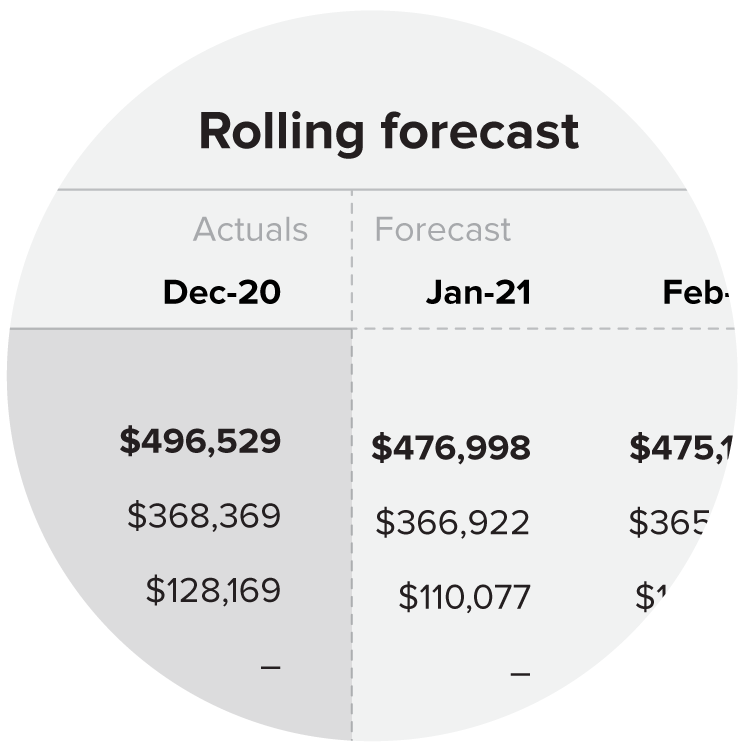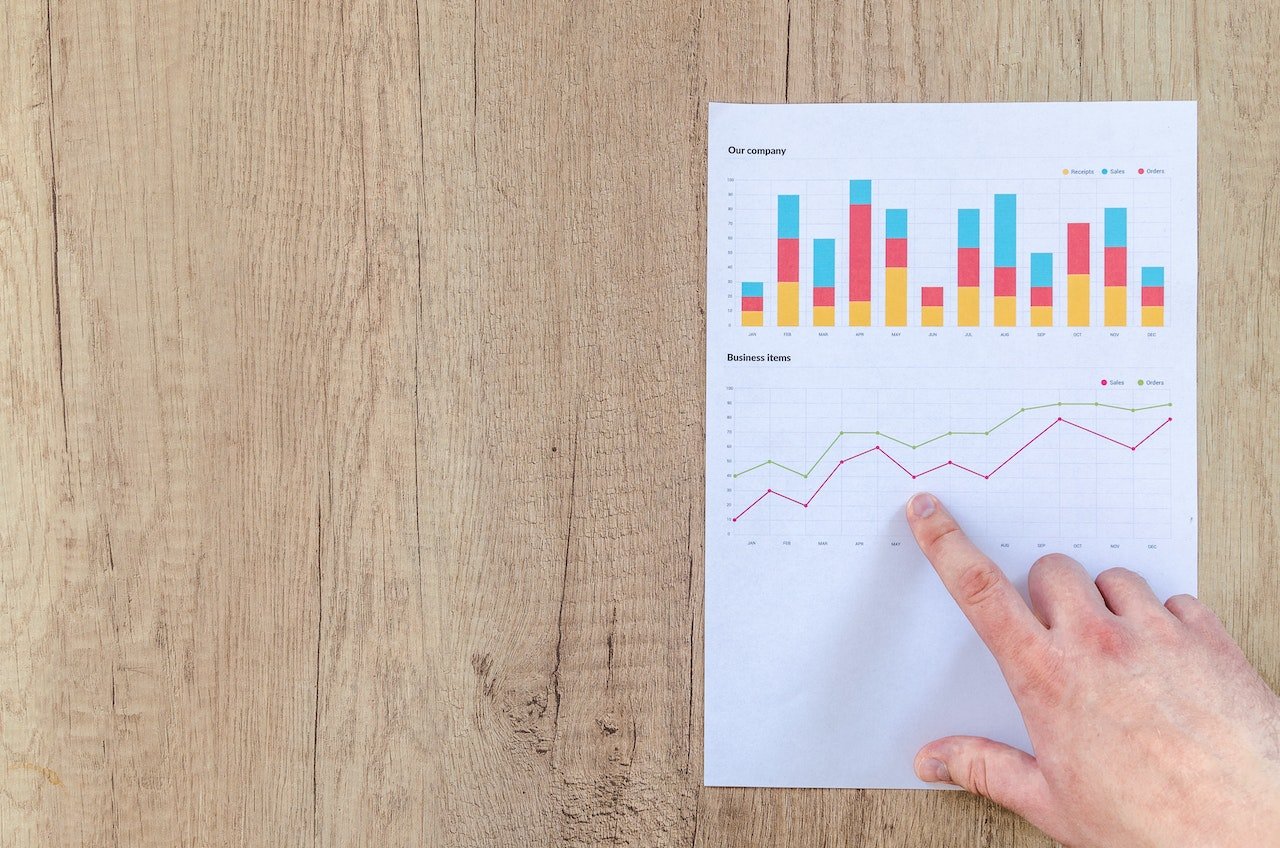Budgeting and forecasting are both key tools for steering your business. Your accountant probably knows the differences between budgeting and forecasting. But sometimes it can feel like the terms are used interchangeably and it’s not always easy to know which is which.
Although they serve different purposes, both the budget and the forecast help you better manage your business and provide the most value when used together.
What is budgeting?
Budgeting is normally an exercise performed once a year. The process often starts late in the year in order to set the expectations for the following year in terms of revenue, profitability and cash flow.
Larger companies often split the effort between different teams and functions. For example, the revenue plan is created by the sales and marketing team based on various sources. Often they consider overall market size, the current chunk the company holds combined with the growth rates. Some companies may even plan by customer and type of product.
Based on the revenue plan, the operational team will then need to define its needs in terms of personnel and equipment. Depending on the type of company, this might also include planning for investment in technology, production machines or R&D.
In a larger company, these inputs are then consolidated by the finance team in order to provide a comprehensive view of the business. In smaller companies, the budget may be created by the owner or CEO together with the head of finance and a few other key people
This budget then acts as the baseline for the year. As such, it normally provides the basis for any performance-based compensation and for the company’s variance reporting.
What is a forecast?
One key aspect of a CEO’s job is to accurately plan for the future. Forecasting is a big part of that planning. While it’s a broad term, we’ll focus on two basic types of forecasts: long-term and short-term.
Long-term forecasts are mainly used for strategic planning purposes and only with a high-level view of revenue and expenses. They are also sometimes used to secure bank loans or other external financing.
Short-term forecasts focus on the current prognosis for the business. Best when updated regularly, this forecast can be a top-down or bottom-up exercise and custom-tailored to the company’s needs.
Looking at the current situation of the business and the overall market, the main objective is to determine where there are gaps vs. the baseline. The company’s key actors then decide how to course-correct.
Accurate forecasting can give your company a major competitive advantage by helping you reduce uncertainty and make critical decisions as early as possible. Late recognition of problems - especially cash flow problems - can cause irreversible damage.
Key differences between the budget and forecast
Although they are best used hand in hand with each other, there are some critical differences between the budget and the forecast.
Budgeting is normally a once-a-year exercise where the company defines its goals and develops the roadmap for the following year. In most companies the budget provides a stable baseline against which the monthly or quarterly results are measured. Performance-based compensation is commonly tied to the achievement of the objectives laid out in the budget.
On the other side of the spectrum, the forecast is updated regularly to reflect the current status and projections for the business. This allows the business to identify the adjustments necessary in order to achieve the year’s goals.
Because it’s updated monthly or quarterly, the forecast can also be used to steer operational activities. For example, through driver-based forecasting, staffing requirements and inventory planning can be directly linked to forecasted customer orders. Your cash planning can, in turn, also be linked to your revenue and expenses forecast.
Tips for creating a solid budget
Creating a robust budget can be a challenging experience, especially the first time around. One of the most important things to keep in mind is to clearly define expectations at the outset, before the team is deep into the process.
Setting target KPIs and profitability goals will help avoid unnecessary loops—especially for a bottom-up budget. Knowing where you’d like to end the year helps to better define the actions for the rest of the year.
The same applies to revenue targets and expenses planning. Set challenging, but not unrealistic goals and consider the business environment and market conditions. Don’t forget major necessary investments—including in marketing and capital equipment. These can have a major impact on your cash and profitability expectations.
It’s also helpful to think about non-financial factors. Human resources expenses, customer metrics (i.e. acquisition costs, retention and churn), and floorspace requirements are all aspects of a robust budget.
Aside from the financials—KPIs and cashflow—the most critical factor for successfully achieving your budget is getting buy-in from the team. It’s one thing to plan something on paper or in a tool like Jirav, but it’s another entirely to execute the plan.
Tips for creating an accurate forecast
While the budget is normally done once a year, the forecast should be updated much more frequently—preferably monthly. As with the budget, it’s crucial to have buy-in from the team. Focus on creating something that the team will use and not simply look at.
A monthly forecast doesn’t mean creating a complete bottom-up forecast each month. Using forecasting software and focusing on your key cost and revenue drivers can help you forecast with speed and efficiency.
Ideally, most of the inputs should come from the operational areas. Part of ensuring the team’s buy-in is allowing the forecast to reflect the reality as they see it. Gaps between the forecast and the baseline (the budget), can only be solved through open communication and diligent action. It does the company little good to pretend that everything is fine, only to miss the targets month after month.
Use the information gained from the forecast to focus the team’s attention to key gaps. Define the necessary actions with the team to improve the situation and hold them accountable to execute the plan.
To improve your forecasting process, compare the actuals to the forecast each month in order to increase your accuracy over time. Much like when there are gaps vs. budget, where you see gaps in actuals vs. forecast, address the root causes. Consistently look for areas to improve and focus on one key area at a time.
Treat your forecast as a constant, rolling it over each month instead of creating a once-a-year forecast. Making it a core business process can help you to always stay abreast of the current status of the business and allows for issues that do pop up to be addressed much more quickly.
Budget vs. forecast—how to get the most out of each
Budgets and forecasts can bring the most value to your company when used together. The budget highlights the expectations for the year, while the forecast highlights the business’ current trajectory. Many businesses will use simple spreadsheets, but a purpose-built budgeting and forecasting software solution will make this a far more efficient and easy process.
Jirav is a great all-in-one solution for your budgeting and forecasting needs. With Jirav, you can seamlessly integrate data from all of your tools and systems, eliminating the need for extensive copy+paste exercises and giant spreadsheets. Updating your forecast can be as easy as adjusting your key drivers to reflect your current assumptions.
Then, it’s on you and your team to execute.












